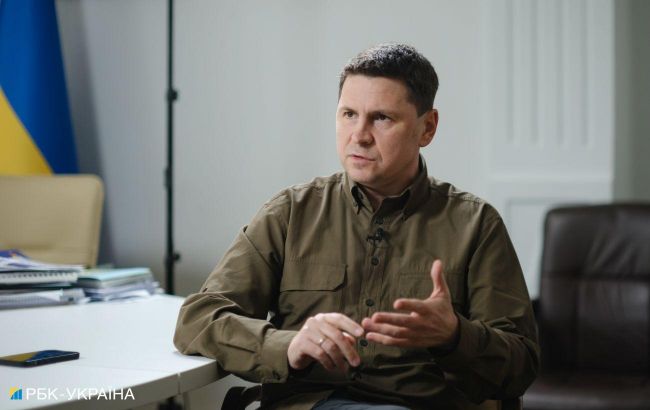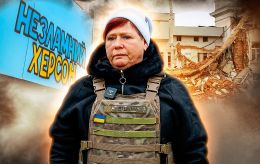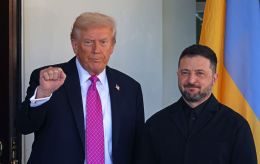Zelenskyy's Office explains connection between Kursk operation and Pokrovsk
 Photo: Mykhailo Podolyak, Advisor to the Head of the Office of the President of Ukraine (Vitalii Nosach, RBC-Ukraine)
Photo: Mykhailo Podolyak, Advisor to the Head of the Office of the President of Ukraine (Vitalii Nosach, RBC-Ukraine)
Ukraine’s operation in the Kursk region is intended to demonstrate to partners the need to increase supplies to the Ukrainian Armed Forces to counter the Russian advance. This also applies to the Donetsk direction, stated Mykhailo Podolyak, advisor to the Head of the Office of the President of Ukraine.
He noted that the Kursk operation is a counteroffensive and will have a significant impact on the course of combat operations across the entire front line, including the Donetsk direction.
In particular, the border breach has forced Russia to withdraw its combat units from several areas in Ukraine, except for Donetsk.
"Undoubtedly, this includes the Zaporizhzhia direction; a bit further south, they are looking for opportunities to move some resources from the North Caucasus and the Kaliningrad region, but they continue to consider Donetsk a key target. Pokrovsk, in this case. They will continue to apply pressure there," Podolyak added.
Russia's actions in the Pokrovsk direction
According to the advisor to the Head of the Office of the President, the Russian forces in the Pokrovsk direction are sending small groups of 10-20 people to assault positions, and some of them "slip through." At the same time, it is not possible to reinforce the defense there by sending additional soldiers because the front line is narrow. Additionally, there are blocking units behind the Russian soldiers.
He explains that the Russian forces are hung up on the Pokrovsk direction because they believe that their successes there will have a propagandistic effect on the Russian population.
"Even if they capture settlements that no longer exist, they talk a lot about it on federal channels," Podolyak clarified.
As the advisor noted, Russia believes that if it continues to strike Ukraine and advance in the Donetsk direction, it will create the impression that it has enough resources to freeze the war on its own terms.
Connection Between Kursk and Pokrovsk
Podolyak points out that Ukraine is taking specific actions.
"Firstly, the Kursk operation is meant to show that there is a need to increase resource supplies, that Ukraine can effectively conduct operations, including defensive ones, including in the Donetsk direction. This is a signal to our partners," he said.
According to him, earlier partners believed that Russia had more resources and would be able to put pressure along the front line. But now, the operation in the Kursk region is changing the allies' perspective on this issue.
Secondly, Ukraine is trying to find more opportunities to destroy enemy equipment concentrated in the Donetsk direction, which requires the appropriate tools, Podolyak noted.
"And thirdly, we certainly understand Putin's (Russian President Vladimir Putin - ed.) personal fixation on this direction. He will act in this direction until the end because it is the only thing he can currently promote domestically to alleviate the panic and shock associated with Ukraine's Kursk operation," the advisor added.
What preceded
Russia refuses to move its soldiers from the Pokrovsk direction to defend the Kursk region. Instead, the Russian forces continue their attempts to take control of Pokrovsk.
As military analyst Roman Pohorilyi, co-founder of DeepState, noted in a comment to the RBC-Ukraine, Pokrovsk and Toretsk are very important targets for the Russian forces. Therefore, they will not halt their offensive there to redeploy soldiers to the Kursk region.
He also specified that Russia has several other directions from which they can take soldiers and send them to the Kursk region.

